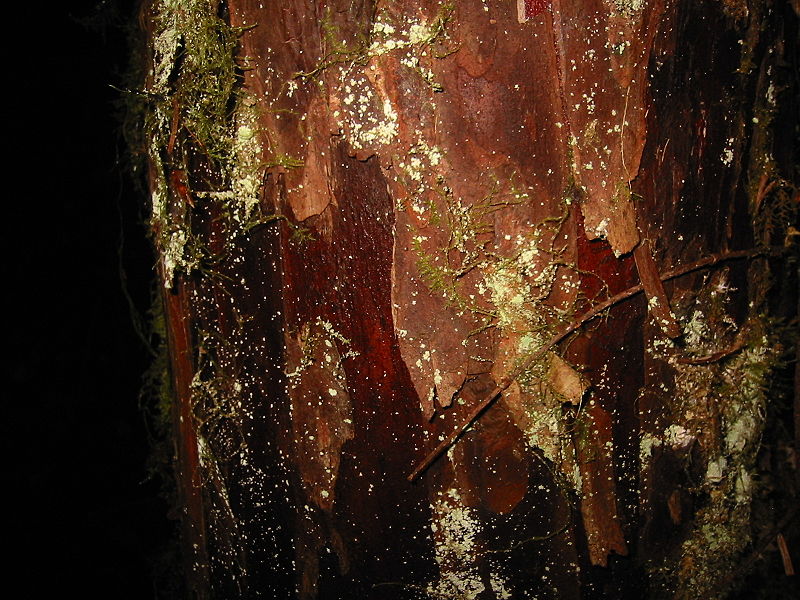Taxus brevifolia
| Taxus brevifolia | ||||||||||||||
|---|---|---|---|---|---|---|---|---|---|---|---|---|---|---|
| Taxus brevifolia (Pacific Yew) foliage Taxus brevifolia (Pacific Yew) foliage
| ||||||||||||||
| Conservation status | ||||||||||||||
| Scientific classification | ||||||||||||||
| ||||||||||||||
| Binomial name | ||||||||||||||
| Taxus brevifolia Nutt. |
Taxus brevifolia (Pacific Yew or Western Yew) is a conifer native to the Pacific Northwest of North America. It ranges from southernmost Alaska south to central California, mostly in the Pacific Coast Ranges, but with an isolated disjunct population in southeast British Columbia and south to central Idaho.
It is a small to medium-sized evergreen tree, growing 10-15 m tall and with a trunk up to 50 cm diameter, rarely more.
It has thin scaly brown bark. The leaves are lanceolate, flat, dark green, 1-3 cm long and 2-3 mm broad, arranged spirally on the stem, but with the leaf bases twisted to align the leaves in two flat rows either side of the stem except on erect leading shoots where the spiral arrangement is more obvious.
The seed cones are highly modified, each cone containing a single seed 4-7 mm long partly surrounded by a modified scale which develops into a soft, bright red berry-like structure called an aril, 8-15 mm long and wide and open at the end. The arils are mature 6-9 months after pollination, and with the seed contained are eaten by thrushes and other birds, which disperse the hard seeds undamaged in their droppings; maturation of the arils is spread over 2-3 months, increasing the chances of successful seed dispersal. The male cones are globose, 3-6 mm diameter, and shed their pollen in early spring. It is mostly dioecious, but occasional individuals can be variably monoecious, or change sex with time.
Uses
The chemotherapy drug paclitaxel, used in breast, ovarian and lung cancer treatment, is derived from Taxus brevifolia. Over-harvesting for production of this drug has resulted in the Pacific Yew becoming a rare species, despite the fact the drug can be produced semi-synthetically from cultivated yews. Pharmaceutical use of closely-related wild yew species in India and China threatens some of those species as well.[citation needed]
-
Pacific Yew foliage
-
Pacific Yew mat form
-
Pacific Yew bark
References
- Template:IUCN2006
- Heiken, D. (1992). The Pacific Yew and Taxol: Federal management of an emerging resource. Journal of Environmental Law and Litigation 7: 175.
- Flora of North America: Taxus brevifolia RangeMap:
- US Forest Service Silvics Manual: Taxus brevifolia
- US Forest Service: Taxus brevifolia (pdf file)
- UCLA text on "Economic Botany"
- Pages with broken file links
- Near Threatened species
- All articles with unsourced statements
- Articles with unsourced statements from July 2007
- Articles with invalid date parameter in template
- Taxaceae
- Trees of Northwestern United States
- Trees of Alberta
- Trees of British Columbia
- Trees of Washington
- Trees of California
- Trees of Idaho
- Trees of Montana
- Trees of Oregon
- Medicinal plants
